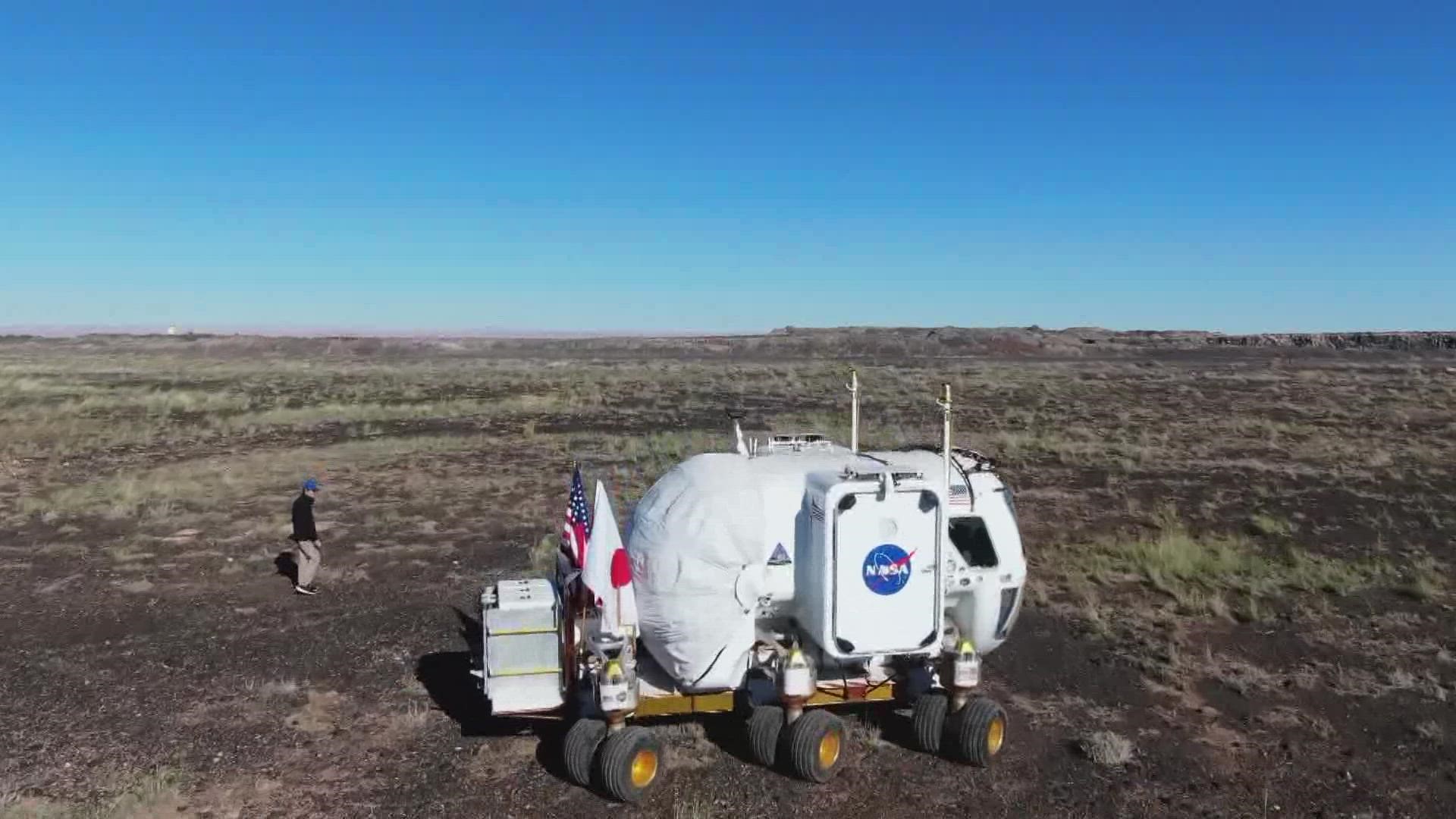FLAGSTAFF, Ariz. — The United States' road to the Moon starts here -- on a dusty, pointy, hurts-to-walk on lava flow about 45 minutes north of Flagstaff.
The lava flow is about 50,000 years old. What's bumping and swerving on it is the newest in NASA rides: A lunar rover.
It can spin on a dime, climb rocks up to a foot tall, even drive sideways. All things that astronauts will need to explore the Moon. And they chose the area around SP Crater near Flagstaff because it's the closest thing to the Moon on Earth. At least when it comes to a landscape that will break a vehicle meant for space.
The rover will be part of the Artemis mission, returning Americans to the moon for the first time since the 1970s, planned to start in 2025.
"All the wheels are independently controlled and they also have active suspension so they can raise and lower when needed," said Omar Bekdash, one of the NASA engineers working on the project.
This model of the rover is a testbed. It's gone through changes as its designers have seen what they need and what they don't in space. This time, NASA is testing driving systems with windows and cameras in as real a setting as they can.
"People spent two nights in the rover and three days traversing all over the lava flow doing actual geologic science conversing with Mission Control in Houston and really simulating a real lunar mission," Bekdash said.
Also on the test list this time: How does 4G cellular phone technology work on the Moon?
Because, NASA communications engineer Michael Zemba says, "What's the point of going if you're not going to send cool pictures back and cool data and science info?"

